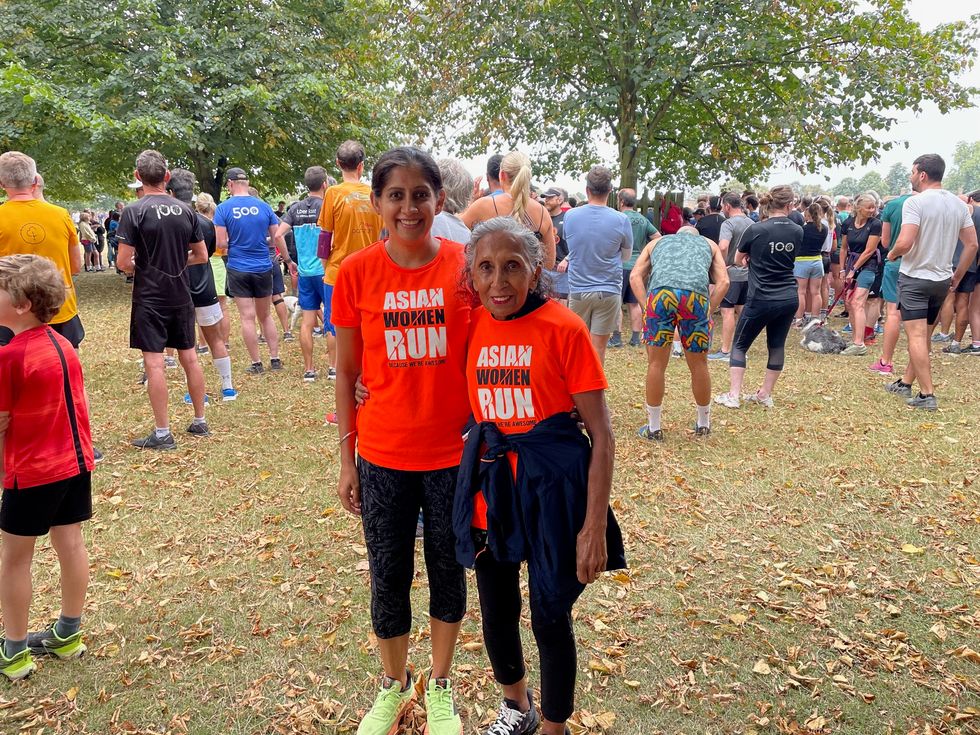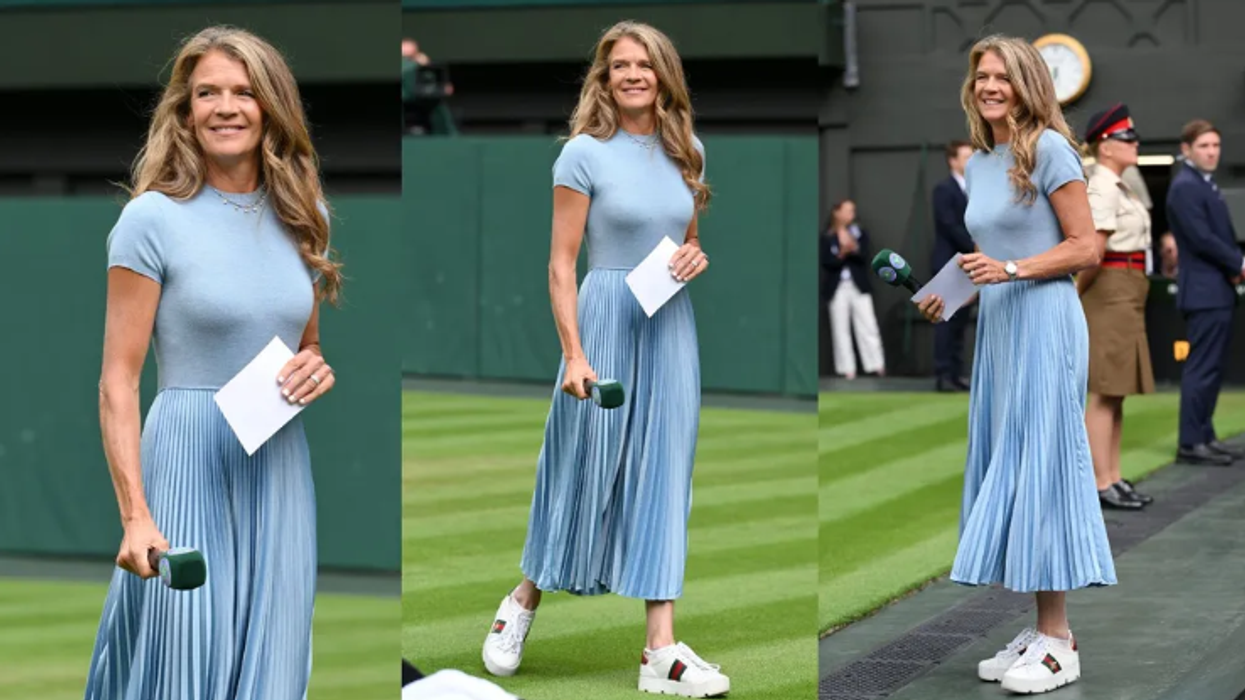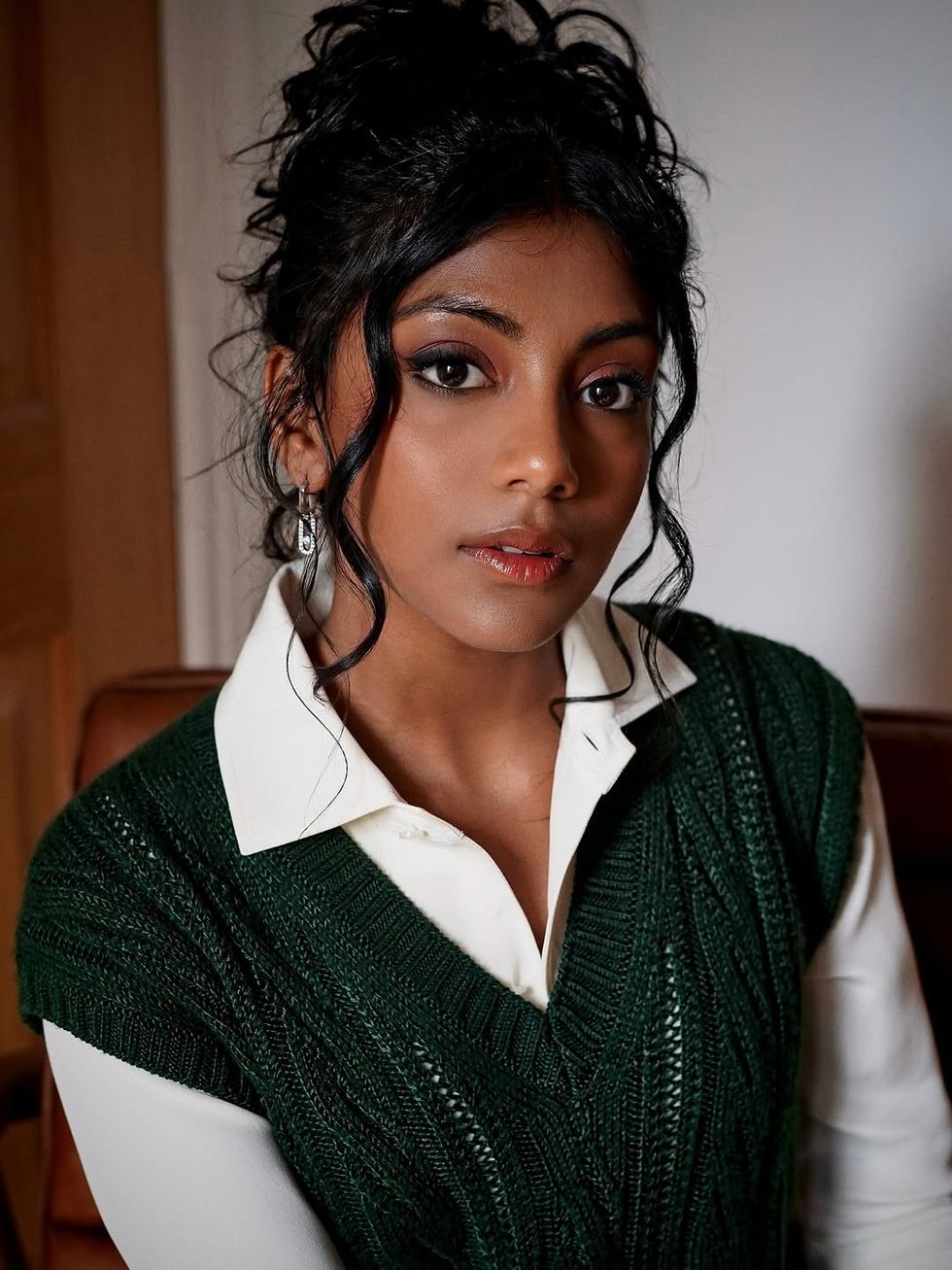INDIA'S FIRST OSCAR WINNER WENT FROM ILLUSTRATING A FASHION MAGAZINE TO BECOMING THE COUNTRY'S GREATEST COSTUME DESIGNER
by ASJAD NAZIR
TRIBUTES poured in from all over theworld for legendary film costume designer Bhanu Athaiya, who sadly passed away in Mumbai, aged 91, after a prolonged illness.
India’s first Oscar winner, who had been diagnosed with a brain tumour in 2012, left an incredible legacy and had a career that stretched across seven decades. She had given Eastern Eye one of her last interviews before slowing down from public life and gave a remarkable insight into an extraordinary journey that started in the golden era of Bollywood and lasted for more than 100 films. Bhanu’s road to greatness started as a tremendously talented young artist at a top weekly magazine.
“I finished my schooling in Kolhapur when I was 17 and came to Bombay, where I stayed as a guest with a lady who was a doyen of theatre and had studied in London. Her mother worked as an assistant at the magazine. They saw my sketches and could tell my hand was good. They gave me the (fashion) design brief that the British have gone and the younger generation needs inspiration. I was able to do that because I had been sketching from a very young age and was exposed to culture in Kolhapur. Also, my father was a painter and my mother was accomplished at embroidery,” said Bhanu Athaiya.
The first-of-its-kind magazine came out every Saturday, and it wasn’t long before the eye-catching fashion spreads caught the attention of Bollywood. She said: “The moment the fashion was seen, all the actors also started chasing me, so I didn’t have to go knocking on any doors, people knew who I was. Top directors like Guru Dutt and Raj Kapoor told me to leave fashion, come and do films.”
She made her breakthrough in Bollywood during the golden decade of the 1950s and hit the ground running. “I was always a very studious person, even before I came to the film world and was widely travelled. I knew about arts and culture, so was fully equipped for every film that was bought to me whether it was contemporary or traditional. Being born in a princely state like Kolhapur, one was exposed to all the arts, painting and cinema. In fact, I was seeing films from the age of seven and even worked in my father’s film, so nothing was new to me.”
This in-depth knowledge suddenly made her the go-to girl for any filmmaker or star who wanted to elevate the look of a film. This led to her working with legendary filmmakers on huge blockbusters. Some legendary early films Bhanu worked on included CID, Pyaasa, Dil Deke Dekho, Chaudhvin Ka Chand, Sahib Bibi Aur Ghulam, Guide and Waqt.
“The 1950s depended more on traditional costumes, whereas the 1960s was a landmark in fashion when actresses like Sadhana came into films. For the movie Waqt, Yash Chopra, Sadhana and myself teamed up to do something different, away from the baggy shalwar and kurtas. Something trim and stylish, so the whole wardrobe was made with that thought. I chose different fabrics like raw silk, a glossy material and did embroidery, but not too much. We had Sadhana’s shapely figure with trim fit outfits and glowing colours.”
Bhanu recalled how her designs caught the fancy of all the young generation, who sent tailors to cinemas and asked them to copy the outfits. This made directors realise the importance of having high fashion in films. Although Bhanu was working with all the big named stars, one leading lady stood out for her during that early path-breaking period. “I must have done two dozen films with Waheeda Rehman, starting from the early Guru Dutt movies. She was my favourite actress.
What was nice about her was the versatility in her roles. She could be a village woman in a movie like Reshma Aur Shera and then in Guide there was a transformation where she went from a married women to being a sought-after dancer. She could instantly adapt herself in the costume that was given to her. It was instinctive and something I felt was noticeable about her,” recalled Bhanu fondly.
She carried on blazing a trail through the 1960s and 1970s with stunning designs in classic films like Teesri Manzil, Brahmachari, Mera Naam Joker, Johny Mera Naam, Satyam Shivam Sundaram and Khilona. “Whatever film came my way, I was always concentrating on doing the right contribution to what the film needed. Money was not my ideal.”
Staging India’s first fully-fledged ramp shows in the 1950s and becoming a fashion influencer with high-profile films didn’t tempt her to launch her own range. Cinema remained Bhanu’s biggest passion. “Cinema enabled me to do everything, from period pieces to contemporary designs. For me, costume designing is so satisfying and fulfilling, and it has got a timeless life; whereas fashion will come and go.”
The amazing work Bhanu was doing in commercial Hindi cinema didn’t go unnoticed internationally and she was asked to design for Richard Attenborough’s multi-Oscar winning drama Gandhi. “Internationally, people abroad raved about my work in Gandhi, but in India most said madam what did you do, everything looks so normal,” she said laughing. “Those people thought doing something for cinema has to be outlandish, but designers from abroad said what I had done was amazing.”
The simple yet effective designs in Gandhi led to Bhanu becoming the first Indian to win an Oscar in 1983. “At the Oscar function when we were sitting in a row waiting to be called, my competitors said ‘we don’t stand a chance because it is going to be yours’. I asked why they thought that and they said my canvas was so huge. The 50-year span of Gandhi ji’s life and showing the transformation in his own personality was such a handful, and the crowd of thousands had to be dressed. They could see that every stage of Gandhi’s life and where he visited was there So much had to be contributed and I was ready for it. Richard Attenborough was making a complex film and needed someone who knew India inside out,” she said.
When the queen of Indian film fashion held the Oscar statue, she thought it was too good to be true. Bhanu thanked Sir Richard Attenborough for focusing the world’s attention on India and thanked the academy. “A film like this cannot come your way all the time. You’re talking about a well-known personality who has made a contribution to the world and being made by a director who is so right in his thinking. The win was ultimately thanks to the hard work each person put into it, like Ben Kingsley.”
Bhanu continued to design costumes for blockbusters in the 1980s and 1990s like Agneepath, Henna, Prem Rog, 1942: A Love Story and Chandni. The turn of the millennium didn’t stop the hardworking designer as she delivered costumes for films like the Oscar nominated Lagaan. She would win honours, including a National Film Award for Best Costume (Lekin) and a Filmfare Lifetime Achievement Award.
She remained connected to fashion and costume design into old age, giving advice to a younger generation and sharing her inspirational experiences. In 2012, just when she was getting ill, Bhanu gave back her Oscar to the Academy because she thought it wouldn’t be properly preserved in India, after she was gone. She also didn’t agree with changing trends and said: “My approach to work has always been to listen to the director first. So I am a director’s designer. This trend today where the stars dictate who should design their costumes is not healthy for cinema. You have to understand that fashion is separate to costume designing. Nowadays, designers are more concerned with doing ramp shows and getting actors to model, which is good for their business, but bad for cinema.”
Even into her eighties and in ill health, she was ready to work and had said: “Well, you know, I wake up in the morning with so many ideas. I want someone to tap me on the shoulder and say ‘will you do this’ and I’ll say, sure. If the subject is good then I am ready.”
RESUL POOKUTTY: SHE INSPIRED US WITH SIMPLICITY
OSCAR winner Resul Pookutty (left) pays tribute to Bhanu Athaiya: “From an illustrator to costume designer, from Indian cinema to the international stage, she did it all. Her loss is huge to cinema, but also to people like me who were given hope in our work and art by her; so it’s a personal loss.
“Her meticulous work and eye for detail brought her supreme recognition with her Oscar win. She has been a source of inspiration with her simplicity and humanism, not just her art. She stuck with Indian cinema, when it would have been easy for her to abandon it for international pastures and likely win more Oscars. She set an example I and many others want to follow.
“My personal favourite works of her are Pyaasa and Sahib Bibi Aur Ghulam, but she leaves me with a wound that still bleeds. No one from Indian cinema or the government came forward to preserve the country’s first Oscar when she decided to give back the statue. Sorry ma’am, we failed you, but your supreme energy will continue to inspire us.”

















 Charithra Chandran styled her hair in soft curls for the Ralph Lauren outfitInstagram/
Charithra Chandran styled her hair in soft curls for the Ralph Lauren outfitInstagram/ Charithra’s look was inspired by her character Edwina Sharma from BridgertonInstagram/
Charithra’s look was inspired by her character Edwina Sharma from BridgertonInstagram/
